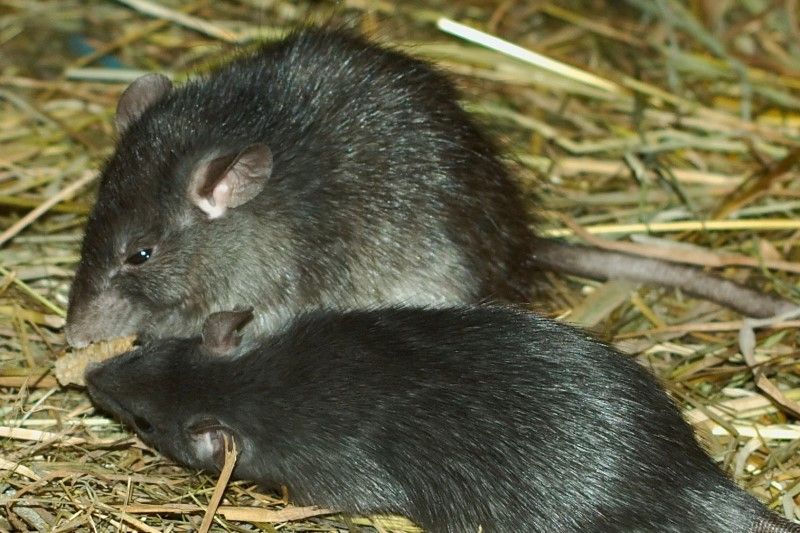Black (or Ship) rat

Status
Naturalised, no known permanent populations remain
Population
Not known
Scientific name
Rattus rattus
Black rats reached Britain on trade ships in Roman times, having spread originally from India. They flourished until the introduction of brown rats, in the 18th century, which gradually displaced them and numbers declined. Their last stronghold, in the mid-20th century, were docks and shipyards, but they vanished from these with the advent of containerisation. The last permanent population in the UK was on the Shiant Isles in the Hebrides, but this was culled in 2017/18 because of concerns that rats feeding on eggs might impact seabird populations.
Black rats are smaller than brown rats, with comparatively larger eyes and ears, and longer, thinner tails . Individuals vary in colour from black to grey-brown and their ears are almost hairless, unlike those of brown rats. Black rats live in groups with a dominate male and are skilled and agile climbers, prefering to make their nests high up in roof spaces (in the tropics, and supposedly on the Channel Islands, they’re known to nest in trees). They’re more commensal than brown rats, mostly living within buildings.
Head-body length: 10 – 24cm
Tail length: A little longer than head-body length
Weight: 150 – 200g
Lifespan: Up to 18 months
Reproduction
Up to five litters of on average 5 – 8 pups are born between March and November.
Diet
Seeds, fruit and grain.
Habitat
Often inside large storage buildings, but also in grassy fields.
Predators
Domestic cats in urban areas, and elsewhere, most mammalian and avian predators.
Threats
Black rats have been gradually displaced by the larger brown rat, which is better adapted to withstand the cold in temperate countries. Rat-proof food stores have also hastened their disappearance.
Conservation status
As an introduced species, a GB Red List assessment hasn’t been made. Global Red List: Least Concern (LC).
Population size and distribution
GB population: not known. They may be extinct but some transient populations (in Southwark in London, and Avonmouth) may still exist, along with small populations on offshore islands. They may still occur on the Channel Islands of Alderney and Sark.
Did you know?
The black rat was thought to carry the ‘black death’ plague, which killed around 40 percent of people in Europe in the 14th century. The disease is caused by a bacterium and was spread most commonly by the bite of fleas. A study in 2015, however, indicates that it was not rats that carried the fleas, but gerbils. After six centuries, black rats may have been exonerated.
